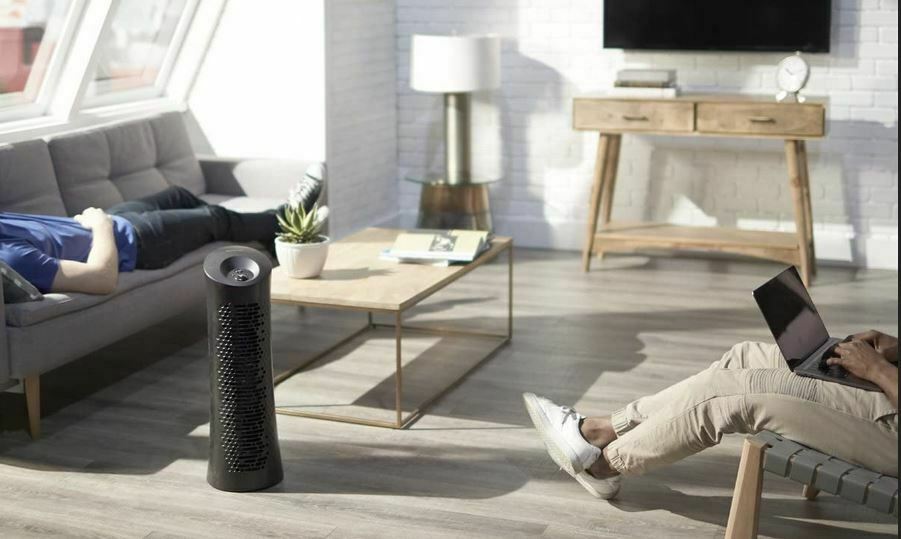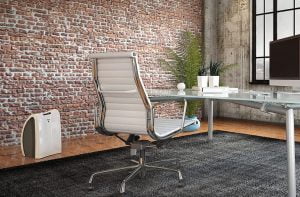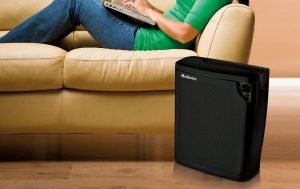The Honeywell Air Purifier by Kaz
Honeywell air purifiers are one of the most popular air purifiers currently on the market today. Their popularity seems to initially be triggered by the fact that Honeywell is a household name for home appliances.
However, unlike most of their competitors which depend on their popularity in other household appliances to enter this industry and then fail, some of the Honeywell’s air purifier lines actually thrive in the air cleaner market.
What many people don’t know though, is that Honeywell home appliance sector is no longer owned by Honeywell Corp. Instead, Honeywell’s home comfort division is owned by a company called Kaz Incorporated.
Therefore all Honeywell air purifiers, although bearing the trade name Honeywell, are actually manufactured and distributed by Kaz Inc.
Kaz produces different lines of air cleaner under the trade mark Honeywell. Some products are more successful than the others.
However, there are two similarities across the board.
First, most of their air cleaner lines offer the best value for money at its price range.
And second, Honeywell air cleaners are most suitable for people who need a good all around cleaning system for their home with the exception of the Enviracaire series, which is also suitable to alleviate mild allergy problems. Honeywell air purifiers are definitely not intended to be used by people with moderate to severe health or other air problems, for instance: asthmatic people, people with severe allergies, and so forth.
This is because all models of Honeywell air cleaners work best to clean up larger airborne particles, with the minimum particle size of 0.3-2 micron, depending on the model. This includes some dust, some tobacco smoke, most pollen, and mold. But they do not contain enough activated carbon (a gas absorbent) to deal with ultrafine particles such as bacteria, viruses, and a variety of volatile organic gases whose size is less than 0.3 micron.
Therefore, if you want to have a good air cleaner for general cleaning, then Honeywell air cleaners will work for you. However, if you have real issues, then you need to shell out more dollars to get an air purifier from premium class, for instance: Austin Air, IQAir, and so forth, to make sure you get rid of those ultrafine particles. Don’t let the word premium scare you financially, since among the premium line, there are no-frill premium purifiers produced by Alen and Austin Air, which cost $150-$250 more than the best series of Honeywell air purifier, the Enviracaire.
Honeywell Air Purifier Potential Drawbacks
All Honeywell air cleaners have the same drawbacks.
Noise.
The majority of people who buy them express that at the loudest setting, it is impossible to listen to conversation or watch TV comfortably, whereas at the lowest setting, it gives out humming noise which some people find too loud to be used in the bedroom.
This is a pity, really, since some of them are actually much better in their cleaning power compared to other brands in Honeywell air purifier’s price range. Some customers even return the unit just because they cannot stand the noise.
The second drawback is quality control. Many complaints have been directed to different Honeywell air purifier quality, from the fact that some receive defective products right from the start, to products which are short lived (months). Some also complain on the appearance of crackling or rattling noise as the time goes by.
It is also important to know that their air purifiers are basic. No remote control and programmable timer available. Filter changing or vacuuming in some of its unit has to be done frequently and can be a bit challenging.
In conclusion, if compared to other general air cleaner in its price range (around $200 and less), some of Honeywell air cleaners clearly offer the best value for money.
Honeywell Air Purifier Models
Presently, Kaz has quite a lot of number of air purifier product lines which bear the name Honeywell. But basically Honeywell room air purifier can divided into four groups based on the way the technology employed to clean up the air.
The first group is the Honeywell HEPA Air Purifier with True HEPA.
All Honeywell air purifiers in this group have the real HEPA filters which last a long time and a carbon prefilter.
Falling into this group are these three models:
- Honeywell Enviracaire Air Purifier with True HEPA:50100, 50150, 50200, 50250.
If you want to get a Honeywell air purifier, we recommend you to get this model since the air purifiers work really well for both all purpose cleaning and alleviating mild allergy problems, and also have good air exchange ratings. - Honeywell Quiet Care with True HEPA:17000 and 17005. This Honeywell HEPA air purifier offers the same technology as the Enviracaire True HEPA, but this model features quieter motor and easy access filter.
- Honeywell Silent Comfort with True HEPA:18155.
This model utilizes the same technology as the Quiet Care and Enviracaire, but it claims to have a quieter motor which makes a difference at the highest setting. As you might know, noise is the biggest drawback of all Honeywell air purifiers and at the highest setting, it’s very annoying to stay in the same room as the air purifier. This model also has the no-draft technology incorporated.
The second group is the Honeywell HEPA-like air cleaner.
All the Honeywell air cleaners in this group have HEPA-like or HEPA-type filters. It is important to note that they are not true HEPA as True HEPA should be able to capture contaminants 0.3 micron or higher. Instead, the HEPA-like filters used in this group can only capture higher contaminant size, which is 2 micron or higher.
At best, this group can be used for all around cleaning, but it won’t help any problems, be it the health or odor problem significantly. They also have an optional ionizer which we recommend not to be used, because it produces ozone, a major lung irritant, as the by-product.
The Honeywell HEPA air purifiers which fall into this group has the prefix HHT (HHT-081, HHT-090, and HHT-080) and have tower shape.
The third group is the Honeywell electronic air cleaner or the ‘Quiet Clean’ series.
As the name suggests, the Honeywell electrostatic air purifier cleans the air using electronic means instead of using traditional filters. In brief, this Honeywell electronic air cleaner uses an ionizer to negatively-charge the airborne particles, and then use the washable IFD plate to attract those charged particles into the plate .
All of the Honeywell electronic air cleaners are tower air cleaners, and have prefix the HFD on their names. HFD-135 has UV light incorporated in the machine for a more sanitizing power.
However, we have reservation on any type of ionizer because they emit ozone, a major lung irritant, as the by-product. There are exception of course. For instance, the BlueAir air purifier here doesn’t utilize an ionizer, but it emits a negligible (below background) amount of ozone. Therefore, unless there is a proof that suggests otherwise, it is best to assume that any ionizer produces ozone at a non-negligible level.
The fourth group is the Honeywell HEPA-UV air purifier series.
Belonging to this group is HHT-145, which is a tower air cleaner with a capability of cleaning bigger air particles, controlling odor and curbing germs.
Other Honeywell air purifier products
In addition to Honeywell room air purifier described above, Kaz also produces whole-house air purifier and compact or desktop air purifier (HHT-011).




